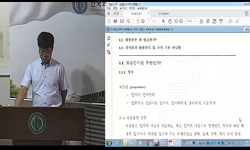이 논문은 한국어 상(喪), 장례(葬禮) 언어의 의미장의 체계와 화행의 특징을 살펴보았다. 한국어 상(喪), 장례(葬禮) 언어의 의미장은 어종(語種)에 따라 분류하면 대부분이 한자어임을 알 수...
http://chineseinput.net/에서 pinyin(병음)방식으로 중국어를 변환할 수 있습니다.
변환된 중국어를 복사하여 사용하시면 됩니다.
- 中文 을 입력하시려면 zhongwen을 입력하시고 space를누르시면됩니다.
- 北京 을 입력하시려면 beijing을 입력하시고 space를 누르시면 됩니다.
한국어 상(喪), 장례(葬禮) 언어의 의미장과 화행 = The Semantic Field and Speech Acts of Mourning and Funeral Language of Korean
한글로보기https://www.riss.kr/link?id=A108077913
- 저자
- 발행기관
- 학술지명
- 권호사항
-
발행연도
2019
-
작성언어
-
- 주제어
-
자료형태
학술저널
-
수록면
61-94(34쪽)
- 제공처
-
0
상세조회 -
0
다운로드
부가정보
국문 초록 (Abstract)
이 논문은 한국어 상(喪), 장례(葬禮) 언어의 의미장의 체계와 화행의 특징을 살펴보았다. 한국어 상(喪), 장례(葬禮) 언어의 의미장은 어종(語種)에 따라 분류하면 대부분이 한자어임을 알 수 있었다. 상(喪), 장례(葬禮)가 누구나 겪는 보편적인 행사임에도 불구하고 고유어가 아니라 한자어들로 구성되어 있다는 것은 의례 자체가 중국의 영향을 받았을 뿐만 아니라 그 행사가 가지는 매우 높은 의례성 때문이라고도 해석할 수 있다.
의미에 따라서는 [장례 거행성], [임종 전 의식 거행성], [초상 공지성], [울음 소리], [상주 위로성]과 [애도성] 등의 의미성분에 따라 체계화할 수 있었다. [장래 거행성]은 다시 주체에 따라, 시신의 유무에 따라, 시신의 이동성에 따라, 간소성에 따라 분류할 수 있었으며 대부분 ‘치르다’와 연어구성을 이루었다. [임종 전 의식거행성]은 종교에 따라 다시 분류할 수 있었으며, [초상 공지성]은 불특정인에게 공지하느냐 특정인에게 공지하느냐에 따라 분류할 수 있었다. [울음소리]는 상(喪), 장례(葬禮) 당사자의 울음이냐 조문자의 울음이냐로 나눌 수 있었고, 슬픔을 극대화하는 표현들과 결합관계를 이루는 특징이 있었다.
한국어 상(喪), 장례(葬禮) 화행의 특징으로는. 대화의 쌍에서 시작 화행이 언어적으로 나타나지 않고 비언어적으로 나타난다는 특징을 가장 먼저 들 수 있었다. 이에 따라 대응 화행으로 이루어지는 위로 화행이 상(喪), 장례(葬禮) 화행에서는 언어적으로 가장 먼저 나타나는 빈도가 높다는 특징이 있었다. 상주의 화행에서는 ‘한탄 화행’, ‘원망 화행’으로 슬픔을 대신하는 것도 특징적이었다. 또한 ‘슬프다, 힘들다’와 같은 명시적 감정형용사가 발화되지 않는다는 특징도 있었다.
조문객의 대응 화행은 ‘공감하기’, ‘안심시키기’, ‘의례적인 표현’, ‘격려하기’ 등 특징적인 전략을 통한 위로 화행이 이루어진다. 특히 ‘뭐라 위로의 말씀을 드려야 할지 모르겠습니다’, ‘어떡하냐’, ‘어쩌냐’와 같은 표현이 의례적으로 관용표현처럼 사용되고 있었다.
다국어 초록 (Multilingual Abstract)
This paper presents an investigation into the system of the semantic field and the characteristics of speech acts in the mourning and funeral language of Korean. When the mourning and funeral language of Korean is classified according to the word type...
This paper presents an investigation into the system of the semantic field and the characteristics of speech acts in the mourning and funeral language of Korean. When the mourning and funeral language of Korean is classified according to the word types for the semantic field, it falls into the category of Sino-Korean words in most cases. Even though mourning and funerals are universal events to everyone, the mourning and funeral language is comprised of Sino-Korean words instead of native ones, which indicates that the ceremonies were not only influenced by China, but also hold very significant formality as events.
As for their meanings, they can be systemized according to the semantic components including "holding a funeral," "holding a ritual before death," "announcement of mourning," "sound of cries," "consolation for the chief mourner," and "condolences." The semantic components of "holding a funeral" can further be classified according to the subject, the presence of the body, the travel of the body, and simplicity. Most of them are in collocation with "holding." Those of "holding a ritual before death" can further be classified according to religion. Those of "announcement of mourning" can further be classified according to announcement to unspecific people or certain people. Those of "sound of cries" can further be classified according to the cries of the persons directly involved in the mourning or funeral or those of mourners. They are characterized by their combination with expressions to maximize grief.
As for the characteristics of mourning and funeral speech acts in Korean, the starting speech acts in dialog pairs are non-verbal instead of verbal. Condolence speech acts as corresponding ones thus record the highest frequency of coming first verbally in mourning and funeral speech acts. In the chief mourner's speech acts, "speech acts of lamentation and resentment" replace grief. There are no speech acts for expressive emotional adjectives such as "sad" and "hard."
Mourners' corresponding speech acts are usually comprised of condolence ones based on a characteristic strategy including "sympathy," "reassurance," "ceremonial expression," and "encouragement." Such expressions as "I don't know how to express my condolence," "What are you going to do?" and "How come this happened?" are used ceremonially as idiomatic expressions.
동일학술지(권/호) 다른 논문
-
- 세명대학교 지역문화연구소
- 고광호 ( Ko Kwang-ho )
- 2019
-
- 세명대학교 지역문화연구소
- 유상진 ( Yoo Sang-jin )
- 2019
-
- 세명대학교 지역문화연구소
- 원광희 ( Won Kwang-hee )
- 2019
-
- 세명대학교 지역문화연구소
- 김범문 ( Kim Beom-mun )
- 2019




 KISS
KISS





